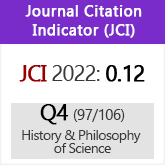Equivocal quintessence. Spiritual Alchemy and counterfeit money in 16th-century Spain
DOI:
https://doi.org/10.3989/asclepio.2011.v63.i2.496Keywords:
Alchemy, Fraud, Counterfeit, Silversmith, Goblins, Trasgos, Santa Engracia Monastery, Counterfeit coinAbstract
One of the main obsessions of the Early Modern Era was that of determining the notions of true and false, in order to apply them to various fields of knowledge and thus establish the divide between the lawful and the unlawful. This trend was to have a particular impact on the fields of re ligion and science, where it became necessary to distinguish not only between true and false spirits, relics or miracles, but also between genuine and fake astrologers and alchemists. Situated in the middle ground between idealism and materialism, alchemy was prime territory for such tensions, as was demonstrated by a trial held in 1593 at the Jeronymite monastery of Santa Engracia in Saragossa, whose prior accused a friar of making «silver out of smoke and jewels from goblins».
Downloads
Download data is not yet available.
Downloads
Published
2011-12-30
How to Cite
Tausiet, M. (2011). Equivocal quintessence. Spiritual Alchemy and counterfeit money in 16th-century Spain. Asclepio, 63(2), 319–348. https://doi.org/10.3989/asclepio.2011.v63.i2.496
Issue
Section
Studies
License
Copyright (c) 2011 Consejo Superior de Investigaciones Científicas (CSIC)

This work is licensed under a Creative Commons Attribution 4.0 International License.
© CSIC. Manuscripts published in both the printed and online versions of this Journal are the property of Consejo Superior de Investigaciones Científicas, and quoting this source is a requirement for any partial or full reproduction.All contents of this electronic edition, except where otherwise noted, are distributed under a “Creative Commons Attribution 4.0 International” (CC BY 4.0) License. You may read here the basic information and the legal text of the license. The indication of the CC BY 4.0 License must be expressly stated in this way when necessary.
Self-archiving in repositories, personal webpages or similar, of any version other than the published by the Editor, is not allowed.















